Best Things to See and Do in Niš, Serbia
Serbia’s capital Belgrade often gets most of the attention when it comes to travel. It is, after all, a must-see city. But, don’t forget its little brother to the south Niš. There are several things to do in Niš, Serbia, so we would recommend spending at least two days in the area. One day should be reserved for the city of Niš and the other for nearby villages and natural scenery like the Sićevo Gorge.
Things to Know About Niš
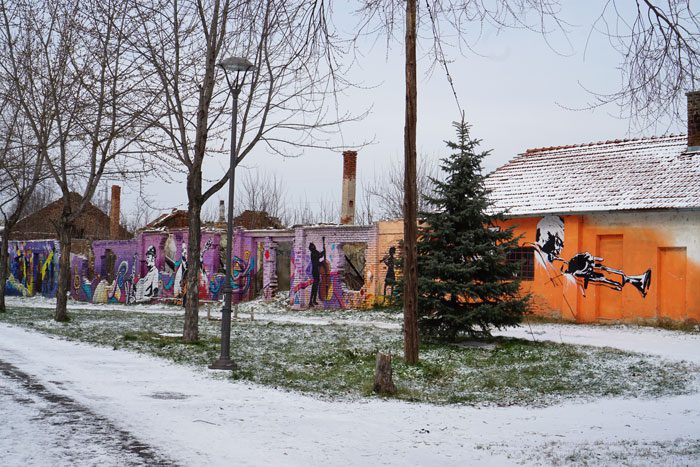
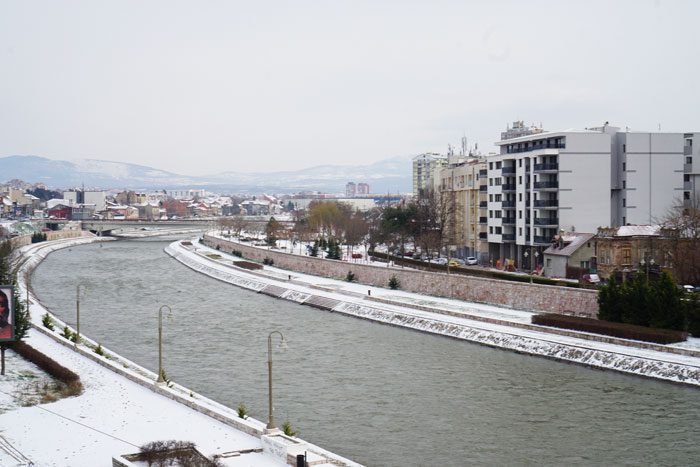
Niš is one of the oldest cities in the Balkans and in Europe, seen during ancient times as a gateway between the East and the West.
The Romans built the Via Militaris through Niš in the 1st century. This was an ancient Roman road that connected modern Serbia and Bulgaria all the way to modern Istanbul. Niš is also famous for being the birthplace of several Roman emperors, including Constantine the Great, the first Christian Roman Emperor and the founder of Constantinople.
Niš today is the third-largest city in Serbia and a 2.5-hour drive from Belgrade. The city had a rough history – from 400 years under the Ottoman occupation and 3 years under Nazi occupation, to allied bombings in 1944 and Nato bombings in 1999.
A lot of that hardship is still visible in the city, but today Niš is one of the most significant economic sectors in Serbia with a lot to offer. If you’re looking for more information on the city and its history, make sure to check out some of the popular tours offered here.
How To Get Around Niš
The city of Niš itself is pretty walkable and there are taxis available, but if you’re looking to explore nearby areas like Sićevo Gorge, we certainly recommend renting a car. The highway from Belgrade to Nis was recently redone, so the drive is smooth. Just be careful when driving on countryside roads, especially in snowy winter months, as they can be narrow and hilly.
When renting a car, there are local rental options that we’ve used before, including Zim Car Rental Beograd. But pick-up options are only offered in Belgrade and they do run out of cars pretty quickly in peak season. For a larger option with more variety, we recommend using Discover Cars. The site is very user-friendly and aggregates all types of vehicles and prices to make sure you find the best deal.
And if you’re looking to spend a few days in the east of Serbia, make sure to check our full guide to exploring east Serbia for more tips, inspiration, and travel ideas.
Best Time to Visit Niš
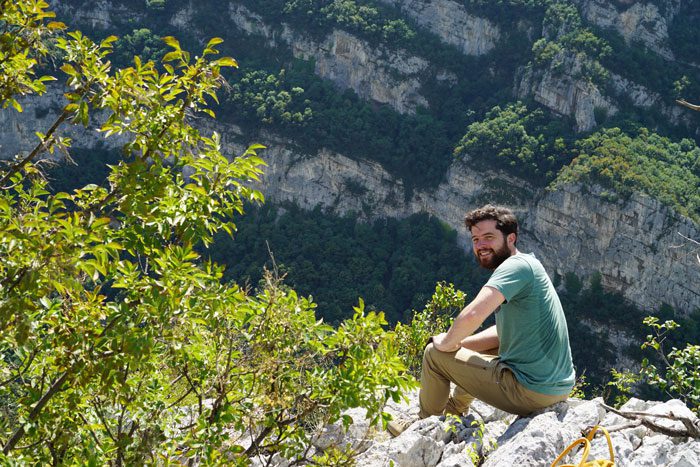

For us, the best time to visit is between April-June and September-November. You’ll notice people really come alive once Spring hits and temperatures become milder, and the Fall months push everyone to enjoy the last few months of sun and the turning leaves.
But, if you love jazz and are willing to brave the summer temperatures, we recommend visiting in mid-August to attend the famous Nisville Jazz Festival. This is a summer festival held every year in the Niš Fortress that aims to fuse jazz with other ethnic traditions, especially from the Balkans.
Lastly, if you choose to come in the winter, we would recommend sticking to the mountains (see Sićevo Gorge and Stara Planina below) as the air can become very unpleasant when people start burning coal for heat.
Things to do in Niš, Serbia
Niš Fortress
The structure we see today dates back to the Ottoman rule back in the 18th Century, but there has always been some sort of fortress in place in that strategic location. The Romans and Byzantines all used it, and it was taken over by Bulgarians during World War I and used as a prison.
We’re of course biased and absolutely love the Belgrade Fortress, but this one gives the capital a run for its money. It stretches over 22 hectares (about 41 football fields!) and it’s overall very well preserved. There are remains throughout, including a mosque, a Turkish bath, and an open-air theater. The fortress overlooks the Nišava River and it’s a popular hangout spot for locals and dog walkers.

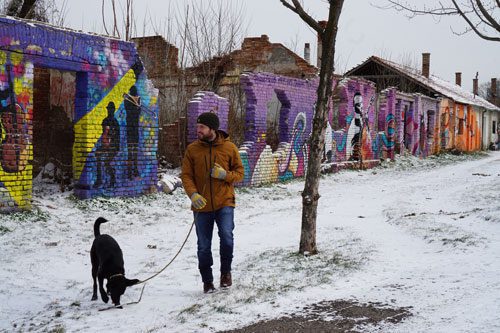
Skull Tower
This is a quick stop, but well worth it for how unique it is. Put bluntly, it is a wall of skulls inside a chapel, and surprisingly well preserved. The wall was built by the Ottomans in the early 19th century during the First Serbian Uprising. The story says that during the famous Battle of Cegar, Serbian rebels were surrounded by the Ottomans. Their leader knew they would be captured, so he detonated a powder magazine killing everyone.
In return, the Ottoman ruler ordered that a tower be made from the skulls of the fallen rebels. Initially, there were 952 skulls, but today there are 58 remaining. As you can imagine, it is seen as a symbol of Serbian courage and independence, so it’s visited quite often and is well-respected by locals.
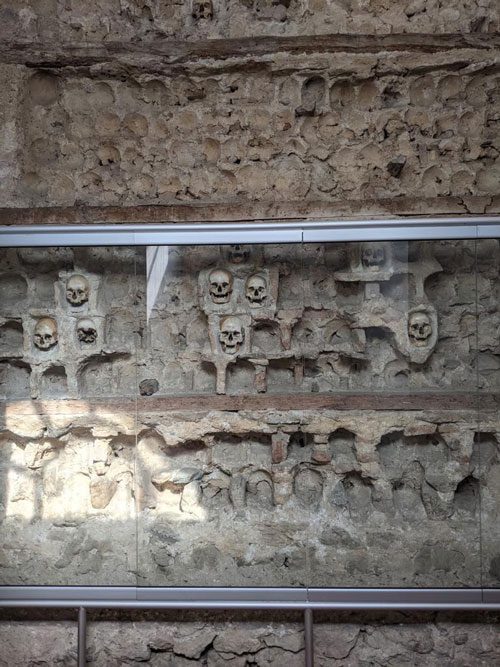
Crveni Krst Concentration Camp
If you grew up in the West, you probably didn’t learn a lot about the impacts of World War II on Eastern Europe. This is one example.
A bit of history – Axis forces invaded the Kingdom of Yugoslavia in early April 1941 and Belgrade was captured 6 days later. The Axis instituted a puppet government to carry out their policies throughout most of Serbia proper. This was the first Nazi concentration camp created in Yugoslavia, and about 30,000 passed through the camp, and it is believed that about 10,000 died.
The camp has been converted into a memorial museum, considered to be one of the best-preserved. As you can imagine, the visit is tough but truly astonishing. The door to the camp is closed, so it almost looks as if it’s not open to the public, but you can walk in and the feeling is quiet and ominous after that. The museum is well done, including some history, facts, and even anecdotes. You’ll get to see most of the camp, including the space where people slept and lived, as well as the grounds surrounded by a wide gray wall. Just note that it closes at 3pm, so you’ll want to make sure to get there early.
This is certainly not an easy visit, but it’s a well-worth stop and a must on our list of things to do in Niš, Serbia.
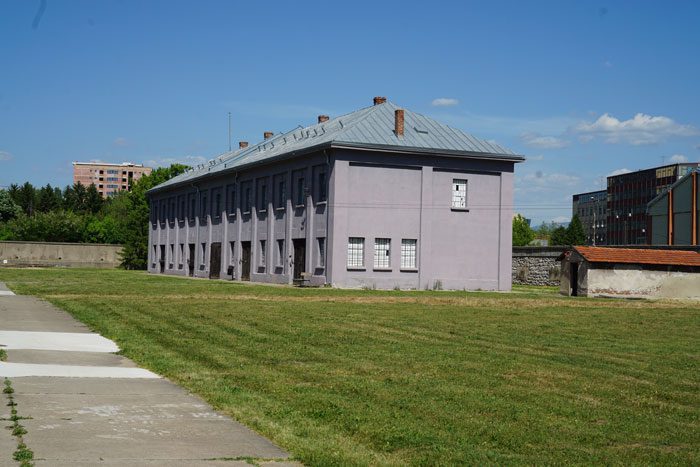
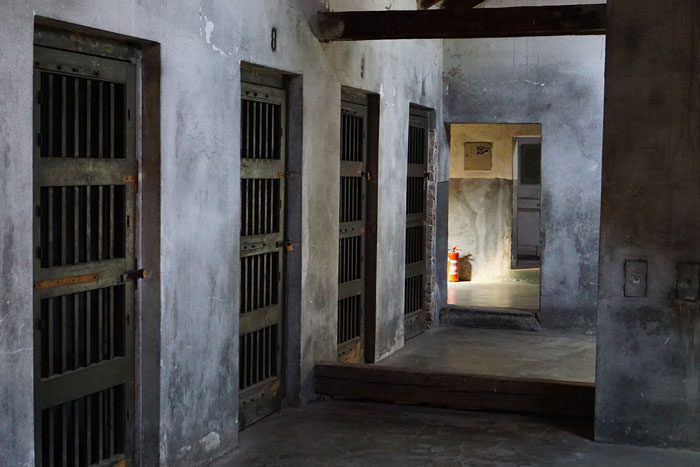
Bubanj Memorial Site
This is a memorial site built to commemorate the thousands that died there during World War II. The Nazis chose this area to conduct mass executions, killing over 10,000 people. Executions here surpassed 100 per day after several escaped from the Red Cross Concentration Camp in February 1942. This was the first organized escape from one of these camps. Almost 150 detainees took part in it, though only 105 managed to escape.
As the war neared the end, Nazis ordered the captured to dig up the trenches and burn the corpses to destroy all evidence of the atrocities. As a result, it’s impossible to know how many really died in this area. Now, the area is honored through three obelisks, showcasing raised hands with clenched fists. They are all different sizes to portray everyone who died – men, women, and children.
Today, the area is visited daily by locals and used as a site for picnics and games. Though the unmissable monument is a strong reminder of what took place and a symbol of resistance.
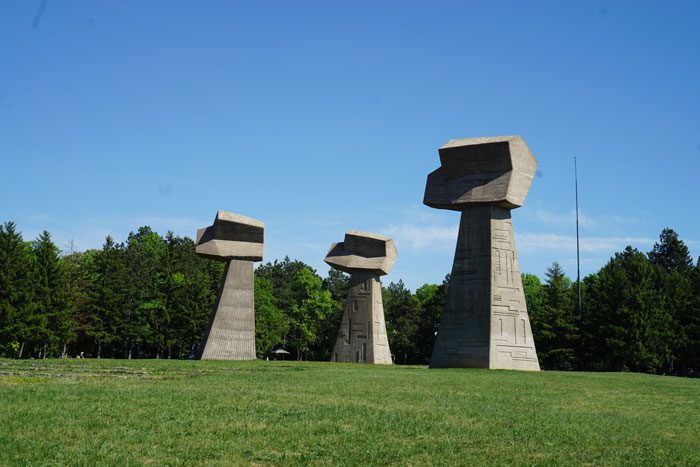
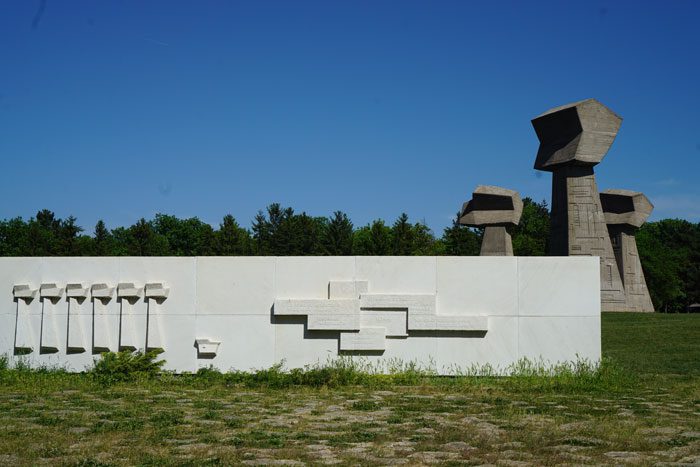
Tinkers’ Alley and City Center
The city of Niš is industrial and doesn’t have a beautiful old city center per se, but Tinkers’ Alley is worth the visit. It is now a famous pedestrian area in the city, though it used to be filled with merchants during Ottoman rule. Today, the area is filled with restaurants and cafes and it’s close to the Nišava River.
The city is busy and getting more crowded, but the visit wouldn’t be complete without a walk through the city and a cafe at any of the outdoor spots.
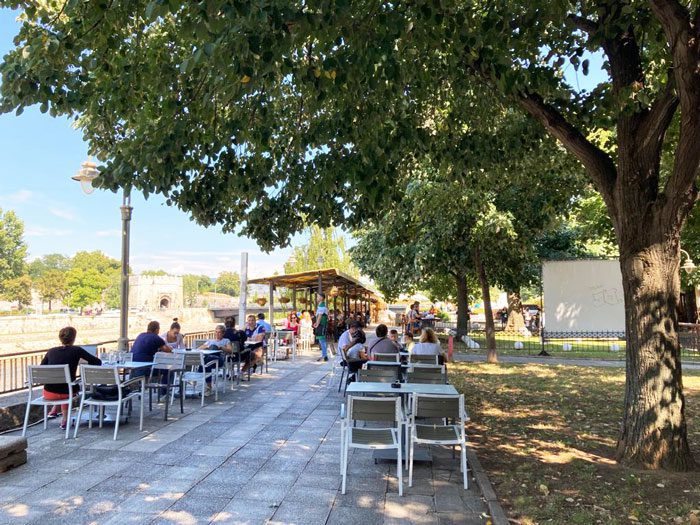

Malča Winery
The winery is just about a 10-minute drive from Niš, but totally worth it. The winery is spacious, with a beautiful restaurant and a large outdoor area. The food is quite good and the prices are unbeatable – we tried their tasting menu and had 3 courses and 4 glasses of wine for under $15 per person.
They have eight clay amphoras buried in the ground – so they say you can enjoy the same quality wine that Emperor Constantine the Great drank in the past. There is an antique cellar with wooden barrels used to make the reds and a more modern one with concrete fermenters. The winery is a bit outside the city, but for the views and prices, we would highly recommend you add it to your things to do in Niš, Serbia.
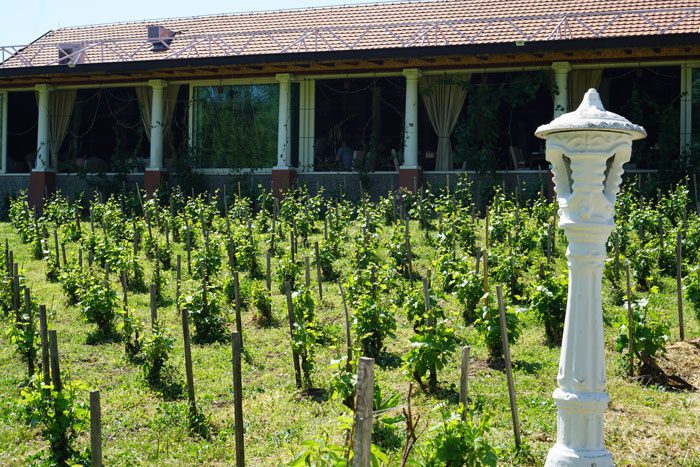
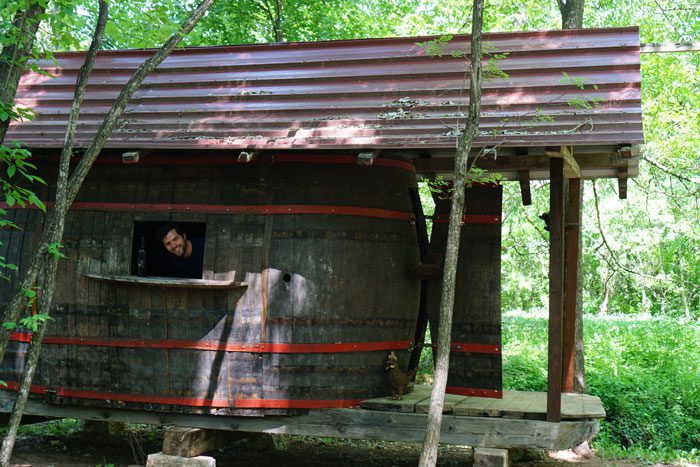
Nisville Jazz Festival
This is a summer festival held every year in the Niš Fortress. Though we haven’t yet gotten the chance to attend, it sounds amazing. Locals say that since the beginning, the goal has been to fuse jazz with other ethnic traditions, especially from the Balkans.
This year, it’s happening from August 12 through the 15 and if you look through the lineup, you can get a sense of the incredible diversity they strive for. Plus, we can’t really think of a better concert venue than an ancient fortress!
Excursions Near Niš
Village of Sićevo
Sićevo is a small village about 30 minutes away from Niš – and where we chose to stay during our visit. It is a small and fairly remote village, but definitely worth the visit. It used to be a wine-producing area during Yugoslavia but was decimated after the fall.
Today, the village is trying to reinvent itself with small wine or honey producers, reconstructed homes turned into b&bs and small museums, and locals choosing to become park rangers to take people around and show them the beauty of the region.
We were lucky enough to meet Dušan Smiljanić, one of the park rangers who formed the Via Militaris Ranger Club, and we wouldn’t have seen nearly as much as we did without him. If you’re looking to explore Sićevo proper, the mountains surrounding it, or even Stara Planina further to the east, we would highly recommend you contact him for a tour. He’ll make life much easier and the visit much more memorable!


Sićevo Gorge
This is a spectacular 17km river gorge formed by the Nišava River. We have now seen it from multiple locations thanks to our tour guide, Dušan. There are long hikes that will take you to stunning viewpoints or Dušan can take you to easier spots by car. Regardless, it’s worth the visit.
The gorge has two hydroelectric plants built in the early 20th Century and designed by Nikola Tesla. One of them still provides electricity to Niš today. The gorge is surrounded by history, and you may be able to spot the remains of Via Militaris – the ancient road leading to Constantinople.
We should note that the trails or pathways aren’t always clearly marked (back to the less developed traits of east Serbia), so working with a guide like Dušan is key.

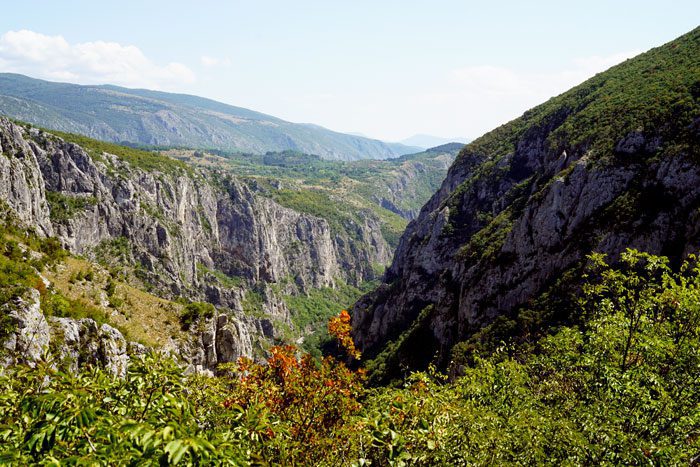
Stara Planina
This is one of Serbia’s most impressive mountains and is about a 1.5-hour drive from Niš. The mountain range connects Serbia to Bulgaria and it has endless stretches of untouched nature. We have sadly not yet been, but it is high on our list of places to visit in east Serbia.
From what we hear, the area is filled with meadows, river gorges, and valleys. It has ski areas with snow about 5 months out of the year, incredible biodiversity, and even a “Stone Village,” with many old houses built completely in stone. We recommend working with Dušan to plan your visit to ensure you get the most out of it.
Where to Stay Around Niš
Konak Ramonda
If you’re choosing to stay in Sićevo as we did, we highly recommend staying in the Konak Ramonda inn. It’s owned by a husband and wife who bought the house and found antiques dug in the basement. Today, they’ve turned it into a wonderful small museum and a beautiful inn. We have been incredibly spoiled every time we visit with food, rakija, and stories.
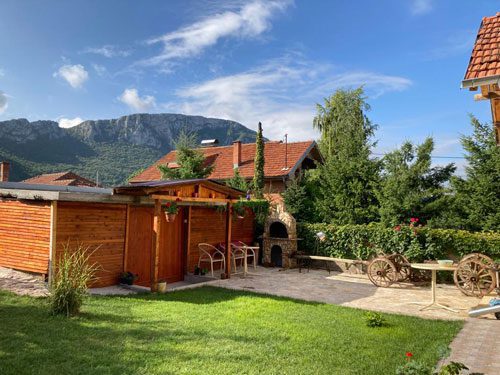
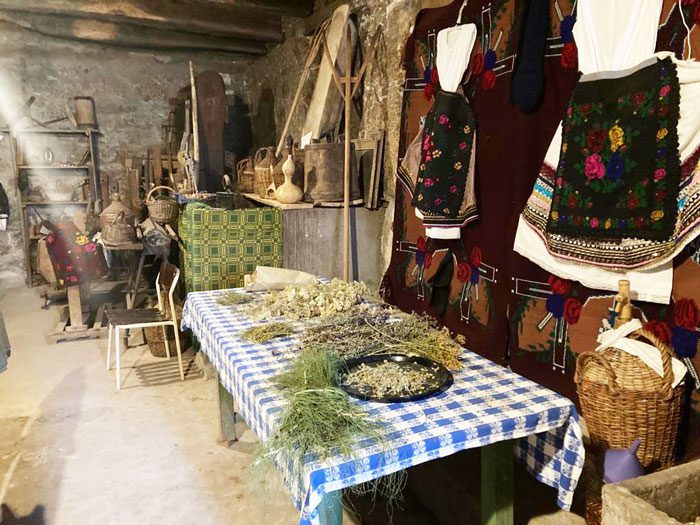
But, if you’re choosing to stay in Niš, there are also some wonderful spots to choose from:
ArtLoft Garni Hotel
The ArtLoft Garni Hotel is a nice hotel with modern and clean rooms, friendly staff, a filling breakfast, and perfectly located in the center of Nis. It’s close to bars and restaurants and only a 20-minute walk from the fortress.
MON Accommodation
The MON Accommodation is a great spot if you’re looking to stay a bit closer to the river. The rooms are well equipped and the staff has great reviews. The property also offers a reserved parking spot, which is very convenient in the city.